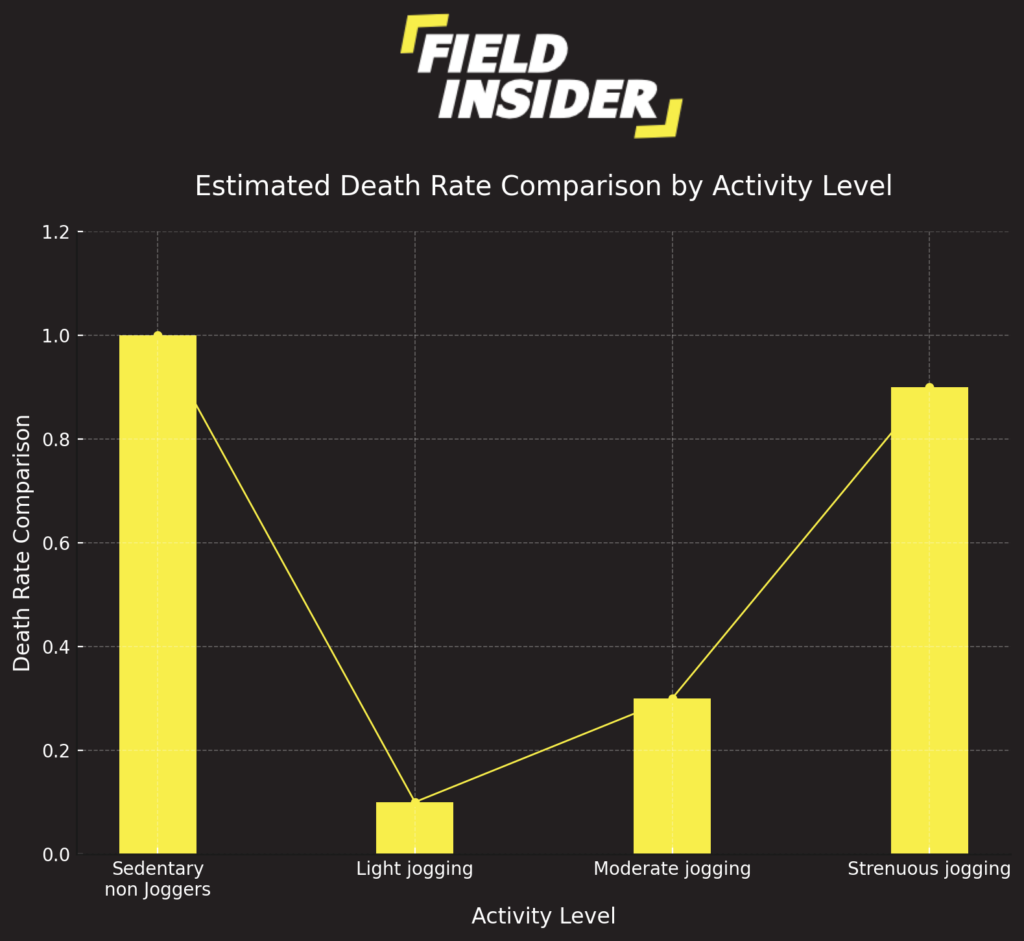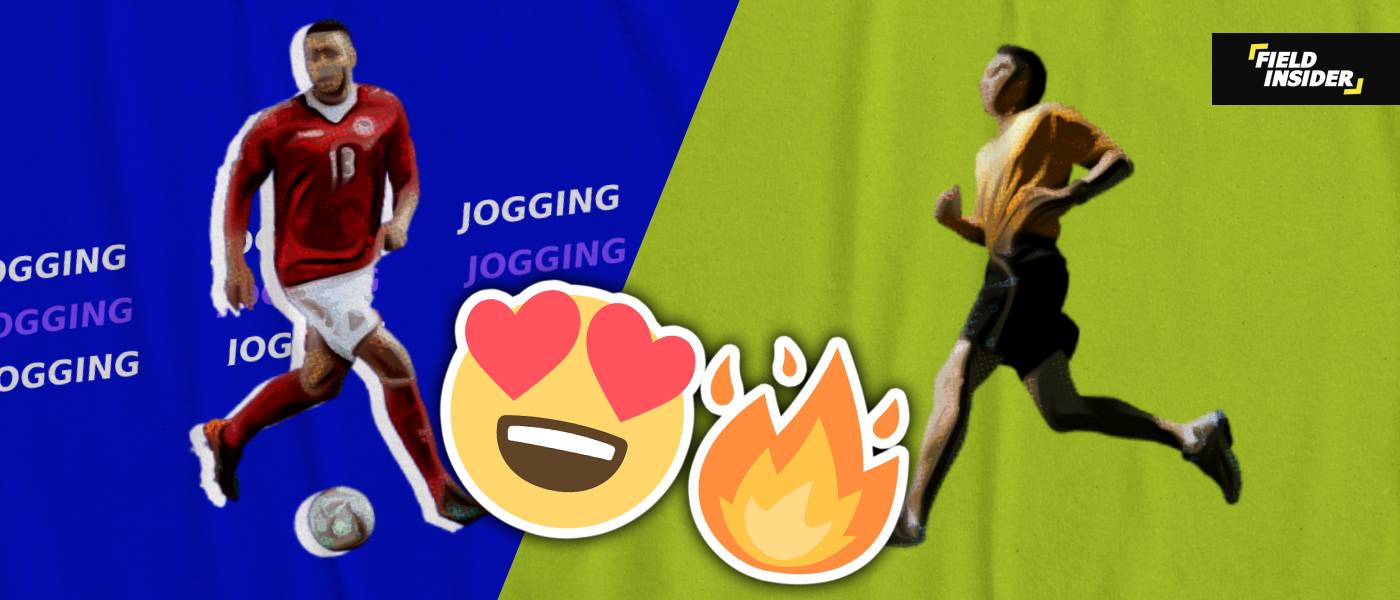How Often Do Footballers Jog? A Guide To Jogging
Football, a game of relentless energy and ceaseless motion, demands a lot from its players. Among the numerous skills and training routines for footballers, jogging stands out as a fundamental aspect. In this comprehensive guide, we’ll dive into the essence of jogging in football’
Key Takeaways
| Aspect | Details |
|---|---|
| Significance of Jogging | Enhances endurance and overall fitness, crucial for football performance. |
| Jogging in Training | Frequency varies by position; integral part of daily routines. |
| Pre-match and Post-match Routines | Essential for warm-up and recovery. |
| Jogging as a Tactical Strategy | Employed strategically during matches for positioning and stamina management. |
| Injury Prevention and Jogging | Regular jogging can help in reducing the risk of injuries. |
| Negative Impacts and Remedies | Awareness of potential negative impacts like overuse injuries, muscle imbalance, mental fatigue, inadequate recovery, and respiratory issues, with corresponding remedies. |
What is jogging?
Jogging, a slower and less intense form of running, is a staple exercise in various sports, including football. It plays a crucial role in building stamina and endurance, attributes vital for footballers who often have to maintain their energy levels throughout a 90-minute match.

For footballers, jogging is used not just for fitness, but also as a warm-up and cool-down activity, aiding in muscle recovery and flexibility.
The Role of Jogging in Football
Jogging is more than just a physical exercise; it is a fundamental element in the training of footballers, playing a multifaceted role in their overall development.
Cardiovascular and Aerobic Benefits
Jogging is key to developing cardiovascular strength and is essential for maintaining energy throughout a football match. This stamina allows players to perform consistently over the full 90 minutes.
Moreover, it increases a player’s ability to sustain higher intensities for longer, a crucial factor in the demanding environment of football.
Mental Toughness and Focus
The discipline of a regular jogging routine fosters mental strength helping players in maintaining focus and resilience during high-pressure situations.
Jogging acts as a stress reliever, clearing the mind and reducing anxiety, which is particularly beneficial before important matches.
Tactical Acumen and In-Game Movement
Regular jogging instills a sense of pacing and energy conservation, essential for effective in-game movement and positioning. Improved stamina from jogging allows players to execute tactical movements more effectively.
Injury Prevention and Recovery
Jogging helps condition muscles and joints, reducing the risk of injuries common in football. It aids in post-game recovery by flushing out lactic acid from muscles, reducing soreness and speeding up the recovery process.
Overall Physical Fitness
Jogging contributes to overall physical fitness, maintaining healthy weight, improving muscle tone, and increasing bone density, vital for a footballer’s health and performance.
In summary, jogging is a fundamental part of football training, significantly impacting a player’s physical, mental, and tactical preparedness.
Frequency of Jogging in Football Training
The frequency of jogging in football training is a nuanced aspect, tailored to the specific demands of different playing positions and individual fitness levels.
Variation by Position and Routine
The frequency and intensity of jogging vary significantly across different playing positions. For example, midfielders might jog more frequently due to their role involving constant movement across the field.
Regardless of position, jogging is important in daily training routines for most footballers. It’s incorporated regularly to maintain a base level of fitness and endurance.
Training Phases and Intensity
The frequency & intensity of jogging sessions vary depending on the training phase. Pre-season often sees more intense & frequent jogging sessions to build up stamina, whereas in-season routines may focus more on maintenance and recovery.
Training programs are often tailored to individual needs, with varying intensity levels of jogging. This customization ensures each player achieves optimal fitness levels without overtraining or risking injury.
Duration and Type of Jogging
The duration of jogging sessions can range from short, high-intensity jogs to longer, steady-state runs. This variation helps in targeting different aspects of fitness and endurance.
Jogging is often mixed with other forms of training, such as sprint intervals, agility drills, and strength training, to provide a comprehensive workout that addresses all aspects of a footballer’s fitness needs.
Jogging in Pre-match and Post-match
Jogging plays a vital role in both pre-match and post-match routines, offering physical and mental benefits.
Pre-match Warm-Up Jogging
Jogging is a key component of pre-match warm-ups, helping players activate their muscles and elevate their heart rates. This prepares the body for the intense physical activity of a match.
The pre-match jog also serves as a mental preparation tool, allowing players to focus, reduce anxiety, and mentally strategize for the game ahead.
Post-match Cool-Down Jogging
After a match, jogging helps in cooling down the body gradually. It aids in the recovery process by preventing muscle stiffness and promoting the removal of lactic acid build-up.
Post-match jogging can also be crucial in reducing the risk of post-game muscle cramps and injuries, ensuring players remain in optimal condition.
Jogging as a Tactical Strategy
Jogging within a football match is not just about physical activity; it’s a nuanced, tactical approach that influences team dynamics, game management, and match outcomes.

Strategic Use During Matches
In-game jogging allows players to conserve energy while maintaining active involvement in the match. This strategy is particularly effective in positions requiring constant movement, like in a Box-to-Box Midfielder or Roaming Playmaker scenario.
Tactical jogging enables players to adjust their positioning efficiently, essential in systems like the 3-4-3 Formation or 5-3-2 Formation, where adaptability and spatial awareness are key.
Impact on Team Tactics and Game Outcomes
Effective jogging is a tool for managing the tempo of the game, allowing teams to control phases of play and conserve energy for high-intensity periods.
The strategic use of jogging can influence match outcomes by ensuring players have the stamina to make impactful plays in crucial moments, especially in tightly contested matches.
Injury Prevention and Jogging
Jogging is an invaluable component of injury prevention strategies in football.
Reducing the Risk of Injuries
Regular jogging helps in strengthening muscles, tendons, and ligaments, thereby reducing the likelihood of injuries common in football, such as strains and sprains.
Consistent jogging enhances joint flexibility and strength, crucial in a sport that demands sudden turns, jumps, and sprints.
Proper Jogging Techniques for Safety
Educating players on proper jogging techniques is vital. This includes correct foot landing, posture, and stride length.
Incorporating jogging in warm-up and cool-down routines prepares the body for the physical stress of the game and aids in post-exercise recovery, further reducing injury risks.
For joggers, less may be more
The following graph has been prepared as per the study originally conducted by Copenhagen City Heart Study.

The bar chart demonstrates the following key points regarding the estimated death rate comparison by activity level:
- Sedentary non Joggers have the highest comparative death rate.
- Light jogging is associated with the lowest comparative death rate.
- Moderate jogging shows a slight increase in the comparative death rate from light jogging but is still much lower than that of sedentary non Joggers.
- Strenuous jogging has a comparative death rate that approaches that of sedentary non Joggers, indicating a higher risk similar to having no activity.
Overall, the chart suggests that light to moderate jogging may be beneficial in terms of death rate comparison, whereas both a lack of activity and very strenuous activity could be associated with higher comparative death rates.
Negative Impact of Jogging On Footballers and Remedies
While jogging offers numerous benefits, it’s important to recognize and address its potential negative impacts on footballers. Understanding these drawbacks and implementing remedies is crucial for maintaining optimal performance and health.

Overuse Injuries and Joint Stress
Excessive jogging, especially on hard surfaces, can lead to overuse injuries like runner’s knee or shin splints. The repetitive impact can strain knees, ankles, and hips.
Incorporating low-impact cross-training activities, such as swimming or cycling, can give the joints a rest. Varying the jogging terrain, using proper footwear, and focusing on softer surfaces can also alleviate joint stress.
Muscle Imbalance and Tightness
Constant jogging can lead to muscle imbalances, with certain muscle groups becoming stronger than others. This can affect a player’s agility and flexibility.
Balanced strength training and regular stretching or yoga sessions can help in maintaining muscle flexibility and correcting imbalances. Dynamic stretching before jogging and static stretching post-jogging are essential.
Mental Fatigue and Burnout
The repetitive nature of jogging might lead to mental fatigue or burnout, especially if it becomes monotonous or overly emphasized in training.
Mixing up training routines with different types of workouts and including team activities or fun games can keep the training engaging and prevent mental fatigue.
Inadequate Recovery and Performance Decline
Without adequate recovery, excessive jogging can lead to a decline in overall performance, as muscles do not have enough time to heal and rejuvenate.
Implementing a well-structured training schedule with adequate rest periods and paying attention to nutrition and hydration are key. Using recovery techniques like foam rolling, massage, and ice baths can aid in faster muscle recovery.
Increased Risk of Respiratory Issues
Jogging in areas with poor air quality can affect a player’s respiratory health, impacting their breathing and endurance.
Choosing jogging routes with better air quality, such as parks or trails away from heavy traffic, is advisable. Indoor training alternatives during days of poor air quality can also be considered.
Conclusion
Jogging, in its simplicity, is a powerhouse of benefits for footballers. From enhancing endurance to playing a role in tactical activity , it’s an important part of football training.
This guide underscores its importance, urging players at all levels to integrate jogging into their routines for optimal performance.
Here are Some of our Favourite Football (Soccer) Cleats








